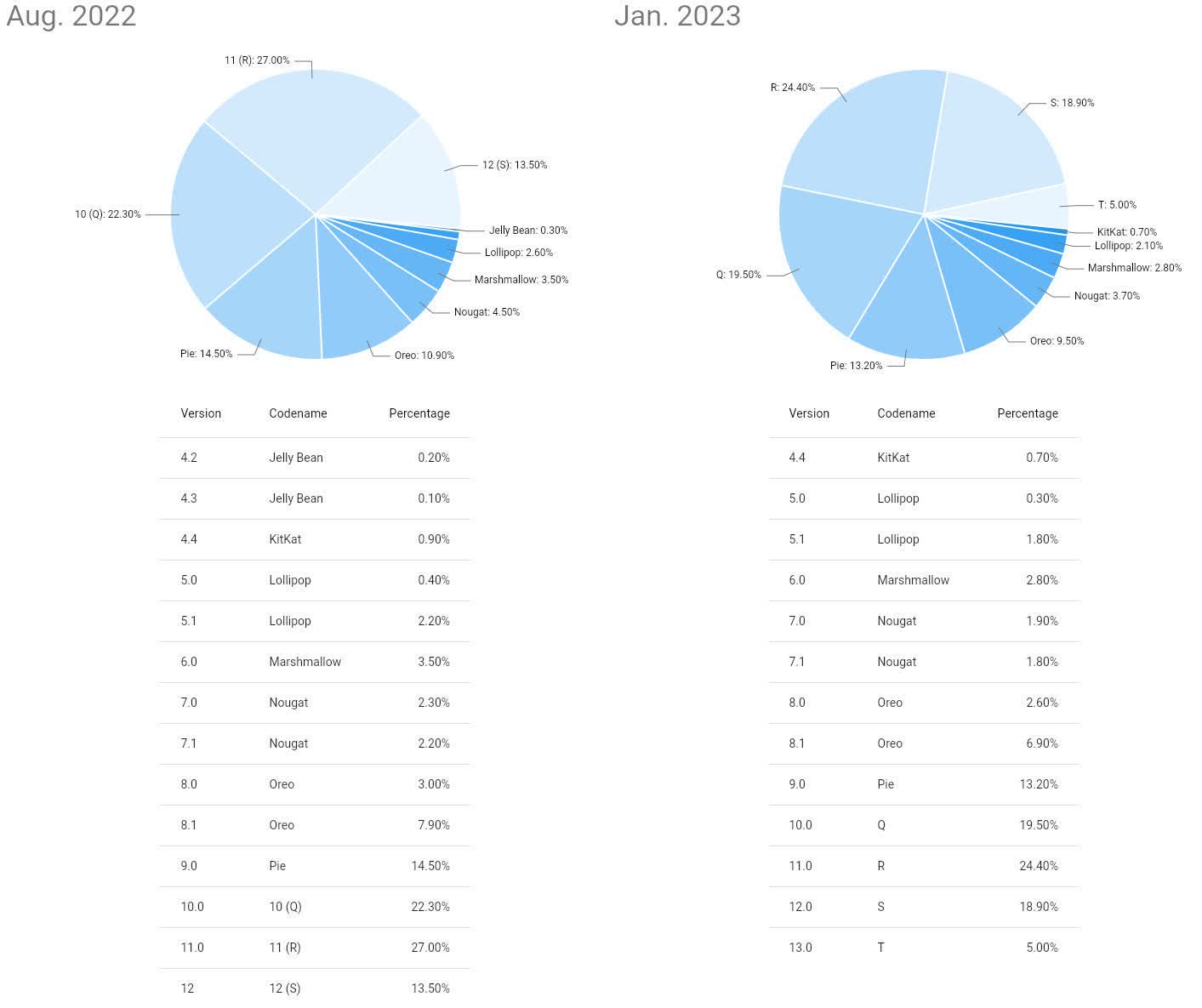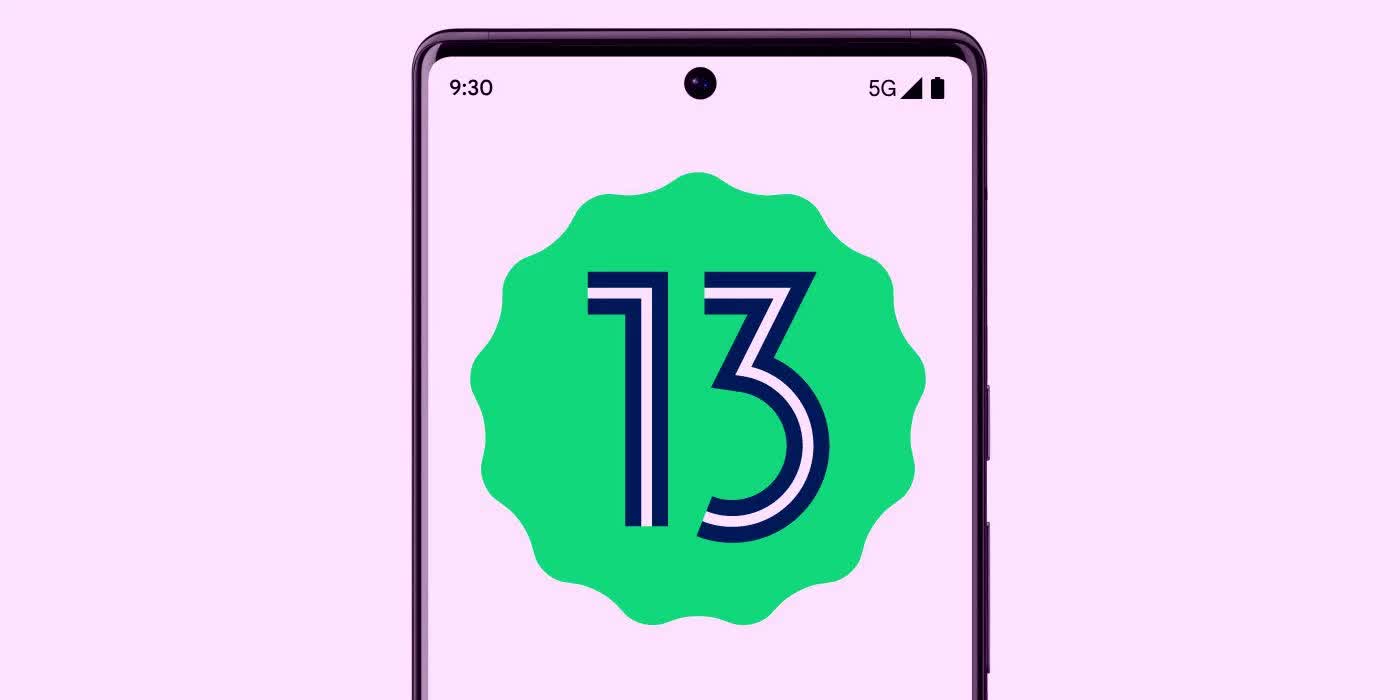The big picture: Android 13 made its debut on the distribution charts this month. While Google has made it somewhat more difficult to track changes in version market share in recent years, its latest OS seems to be enjoying a healthy start thanks to platform partners.
Google's latest chart showing the distribution of Android versions across devices is the first since it released Android 13 last August. The company's latest mobile operating system is already on just over five percent of Android phones. Version 12 also increased its share in the last five months.
Originally, Google periodically and publicly released its data comparing Android version market share to inform developers deciding which versions their software should target. However, in 2018, the company restricted that information to its internal development platform, where the updates became irregular. Since 2020, 9to5Google has accessed the updates and released them through AndroidDistribution.io.
Another element to consider is that, unlike iOS devices, Android phones don't uniformly upgrade to new versions as soon as Google releases them. Manufacturers like Samsung and Sony update their systems based on their own scheduling, which reflects in Google's distribution data.

When Android 13 launched in August, it was exclusive to Google's Pixel phones. Samsung released its Android 13-based OneUI 5 soon after. OnePlus, Sony, and other manufacturers also released phones supporting Android 13 last year, helping the OS's relatively rapid growth.
Android 12 first appeared on Google's charts in the previous update last August --- right before Android 13's launch --- with 13.5 percent of the overall Android market share. Since then, that number has grown to 18.9 percent, while Android 11 has fallen from 27 percent to 24.4 percent. Versions 10 and 9 also still retain significant user bases.
The Android team has introduced numerous features and updates since 13's debut, with more to come. Support for the popular Backbone One mobile gaming controller arrived on Android late last year, and Google recently gave Android Auto its first major overhaul. Additionally, Google and Windows partnered to expand the connectivity between Android and Windows 11.
Qualcomm is working to bring significant advancements to Android as well. In November, the company unveiled the Snapdragon 8 Gen 2 chip with support for Wi-Fi 7, enhanced AI performance, hardware-accelerated ray tracing, Unreal Engine 5, and more. Qualcomm is also introducing a satellite-based communication service to Android phones to answer Apple's SOS system for iPhones.
